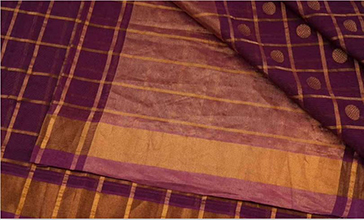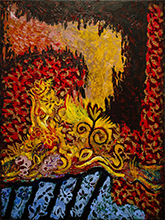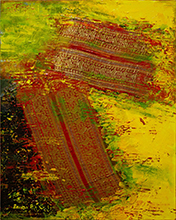
Art
The Art of Indian Textiles

India is host to a variety of textile arts. Handwoven textiles, block printing and fabric dyeing is loved among Indians as well as others from around the world. Major economic interests center around the relationships between the agriculture, textile-crafting and artists of this artform.
Each textile and design are region-based and mastered over generations. The final product involves a lot of labor and skill. Though recent modern technologies have reduced the hard labor work, it still requires a time-consuming and lengthy learning process; it is an artform that cannot be mastered from a college degree. The younger generations must be trained and immersed in the culture from a young age to learn and create these intricate designs.
The textiles are organically made with environmentally friendly materials and dyes. We will be discussing a few of the weaving techniques utilized to craft the characteristic Indian textiles.

.jpg)

Ref. and weave picture credit: “Save the Weave,”https://isha.sadhguru.org/in/en/outreach/save-the-weave
Examples of Weave Styles
The Kimkhab weave is an opulent, highly decorated style originating from the Uttar Pradesh region. Inspired by Islamic art, it utilizes natural elements in its design, focusing on objects such as flowers, birds and trees. As with many weave styles, golden embroidery known as zari acts as an added distinction of ornateness.
The Kasavu weave is recognizable from its ivory-colored base, embellished with golden lace weaving. This style, which originated in Kerala, is highly regarded in the state. The vertical zari embellishments are most often designed as cross bars or with geometric motifs.The Venkatagiri weave is known for its durability. A popular style founded in Andhra Pradesh, this weave is made up of a blend of cotton and silk using pit looms. The resulting textile is soft and breathable, decorated with Jamdani motifs.


Keeping traditions alive
Within the current global landscape, the increase of fast-paced consumer consumption has left the traditions of Indian hand-weaving at a standstill. Therefore now — more than ever — there is a need to preserve this historic artform, not only for its cultural importance, but for its positive environmental impact.
One way that the practice of textile-making can be preserved is by redesigning the materials to suit contemporary fashion trends and the convenience of people.
As an artist myself, I’ve captured elements of Indian textiles designs in my collection of works titled “Saree Series.” “Kanchi Saree from Kanchipuram” and “Banaras Saree” – abstract styles – are fused with the characteristic textile weaves from the regions specified in each painting. In this series, a viewer who may not have any prior knowledge of Indian textile design can gain a newfound appreciation for the craft.
Brinda Pamulapati, owner/managing director, of Venvi Art Gallery in Tallahassee, can be reached at (850) 322-0965 or visit www.VenviArtGallery.com